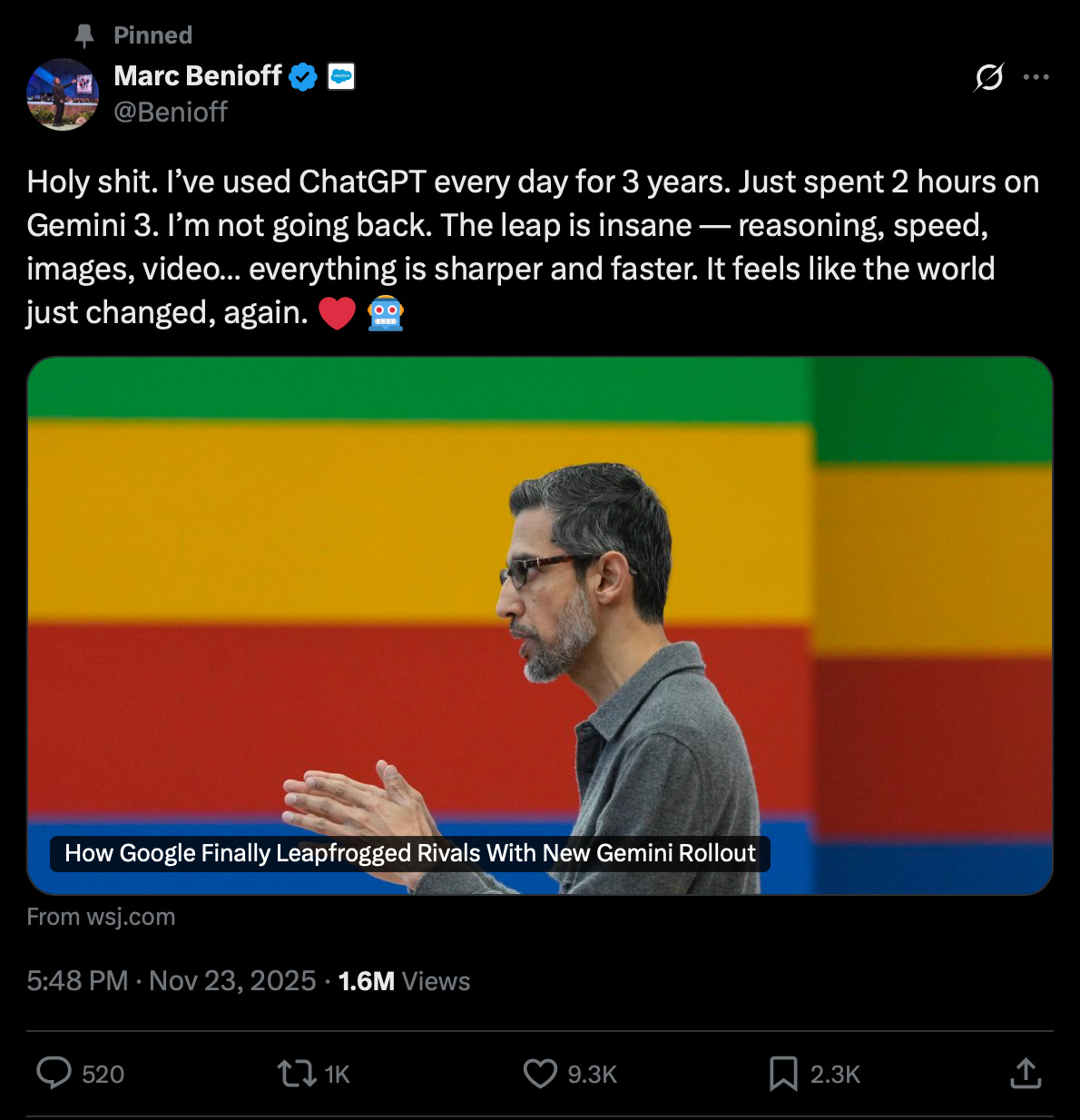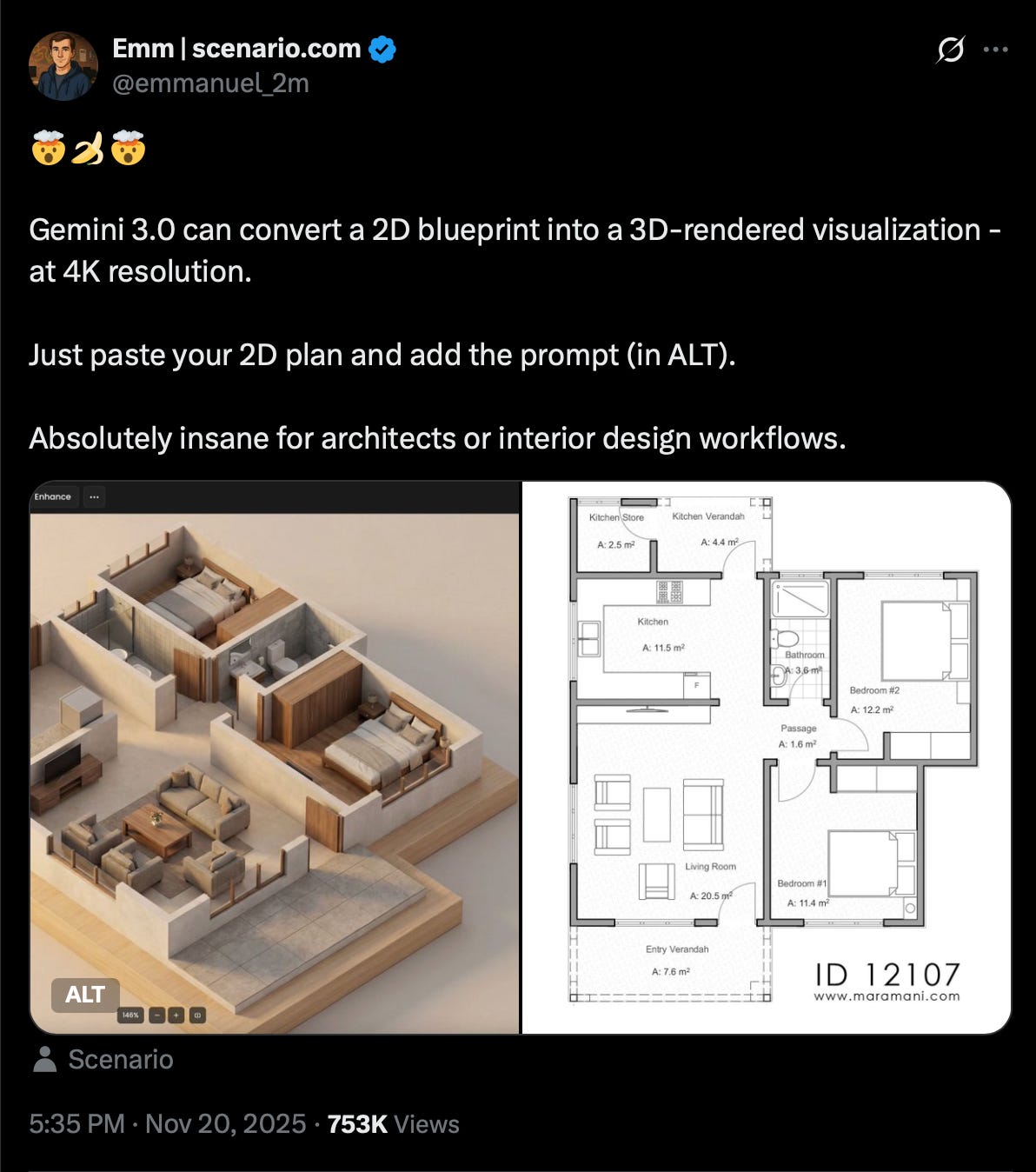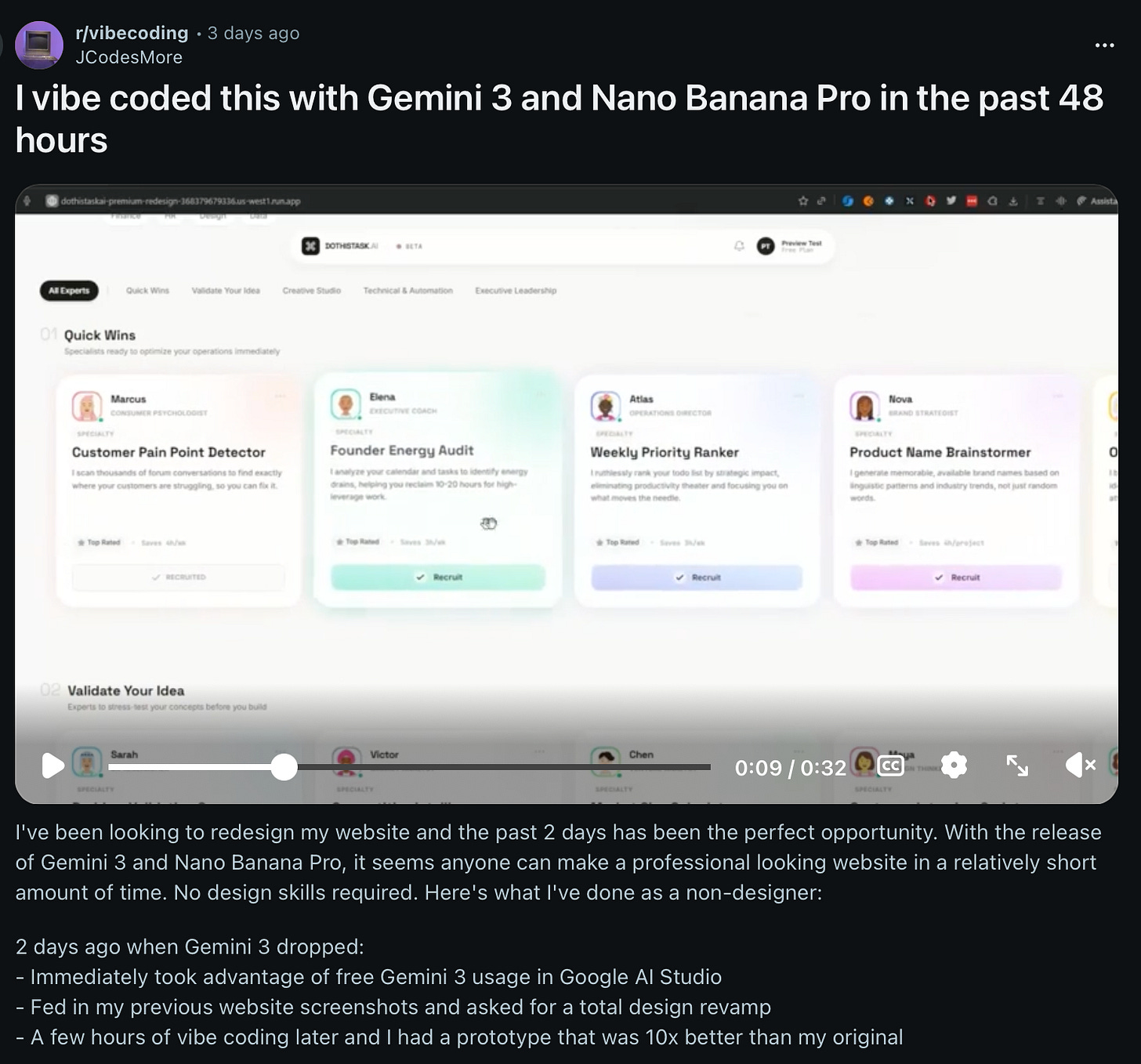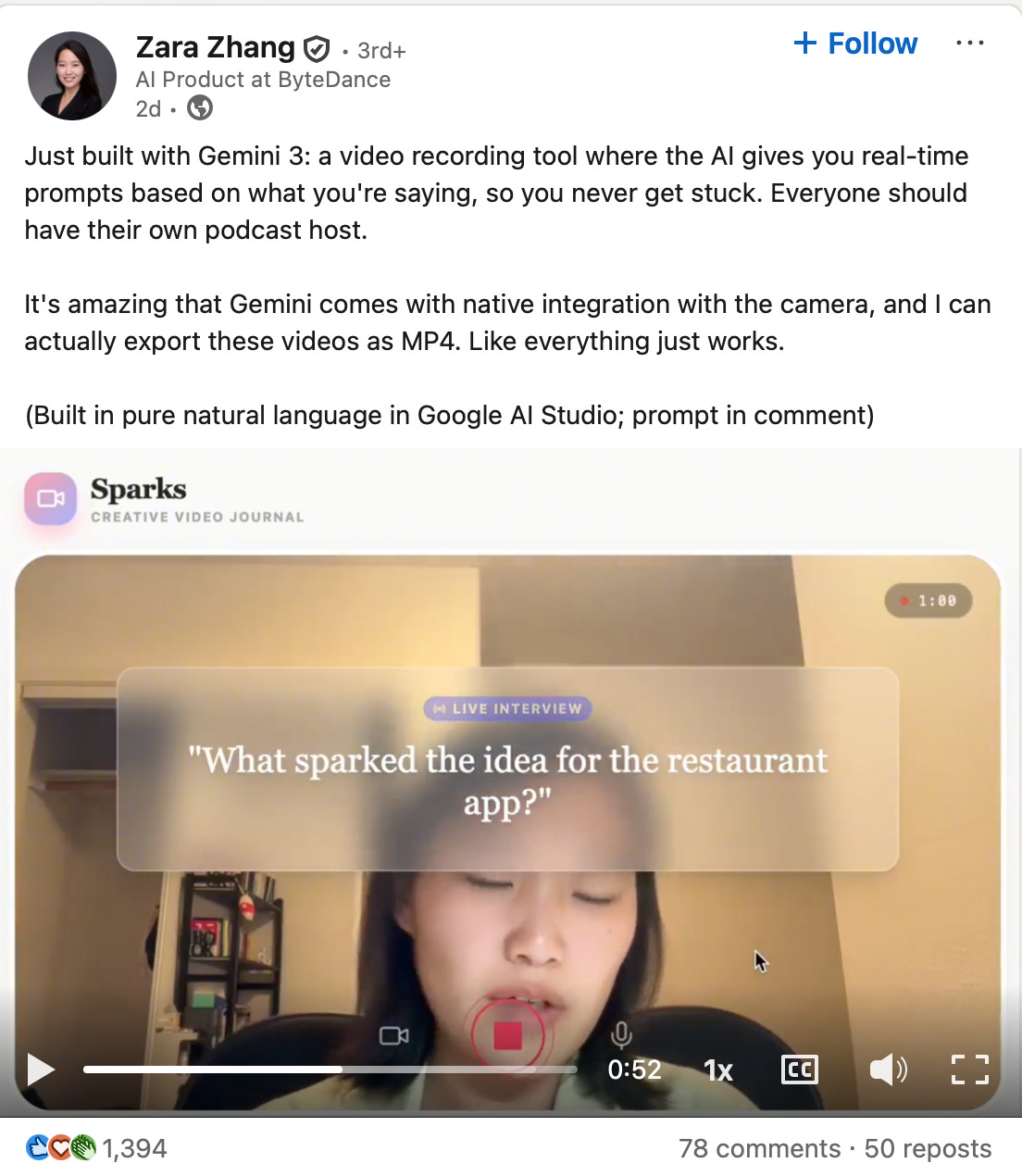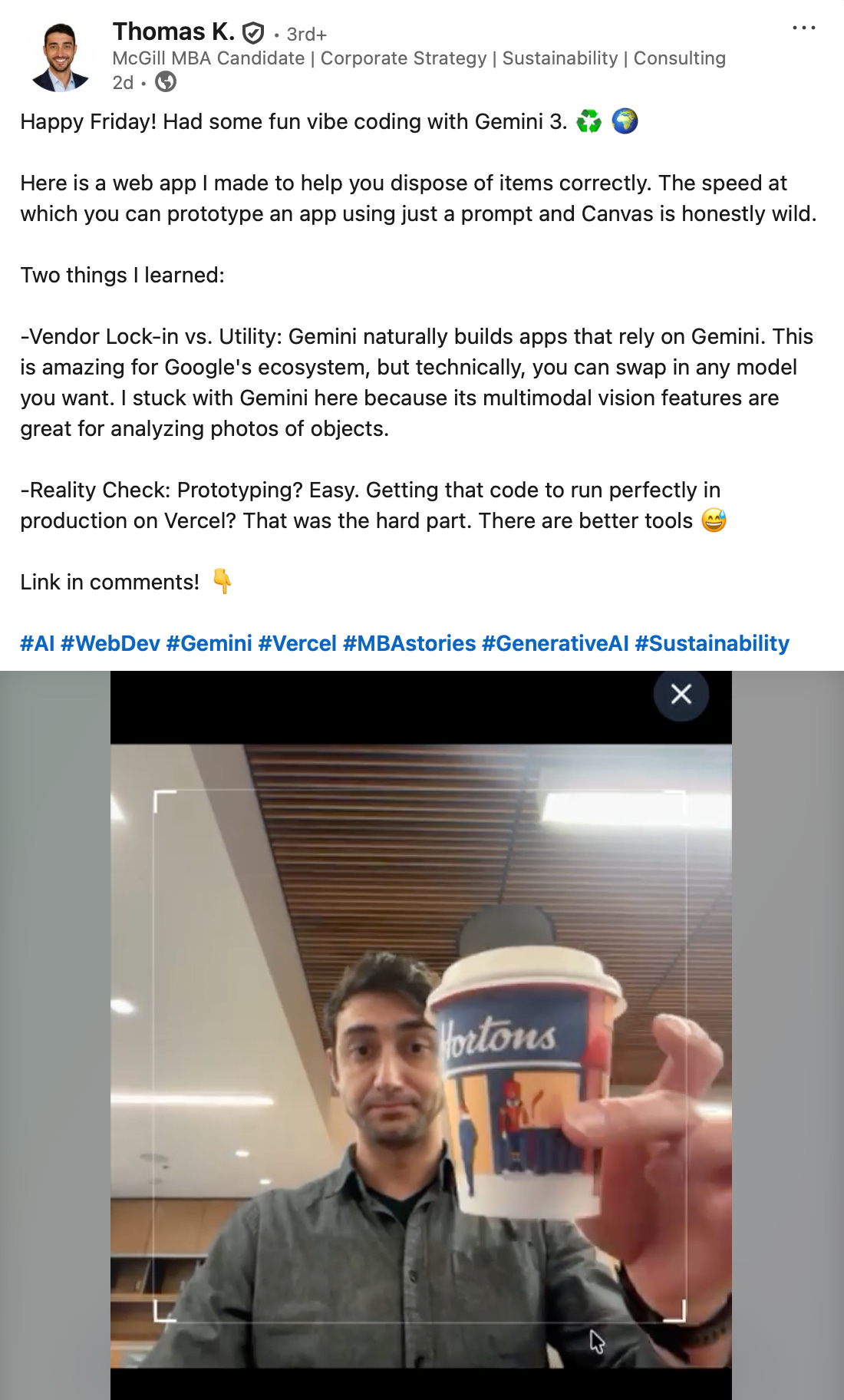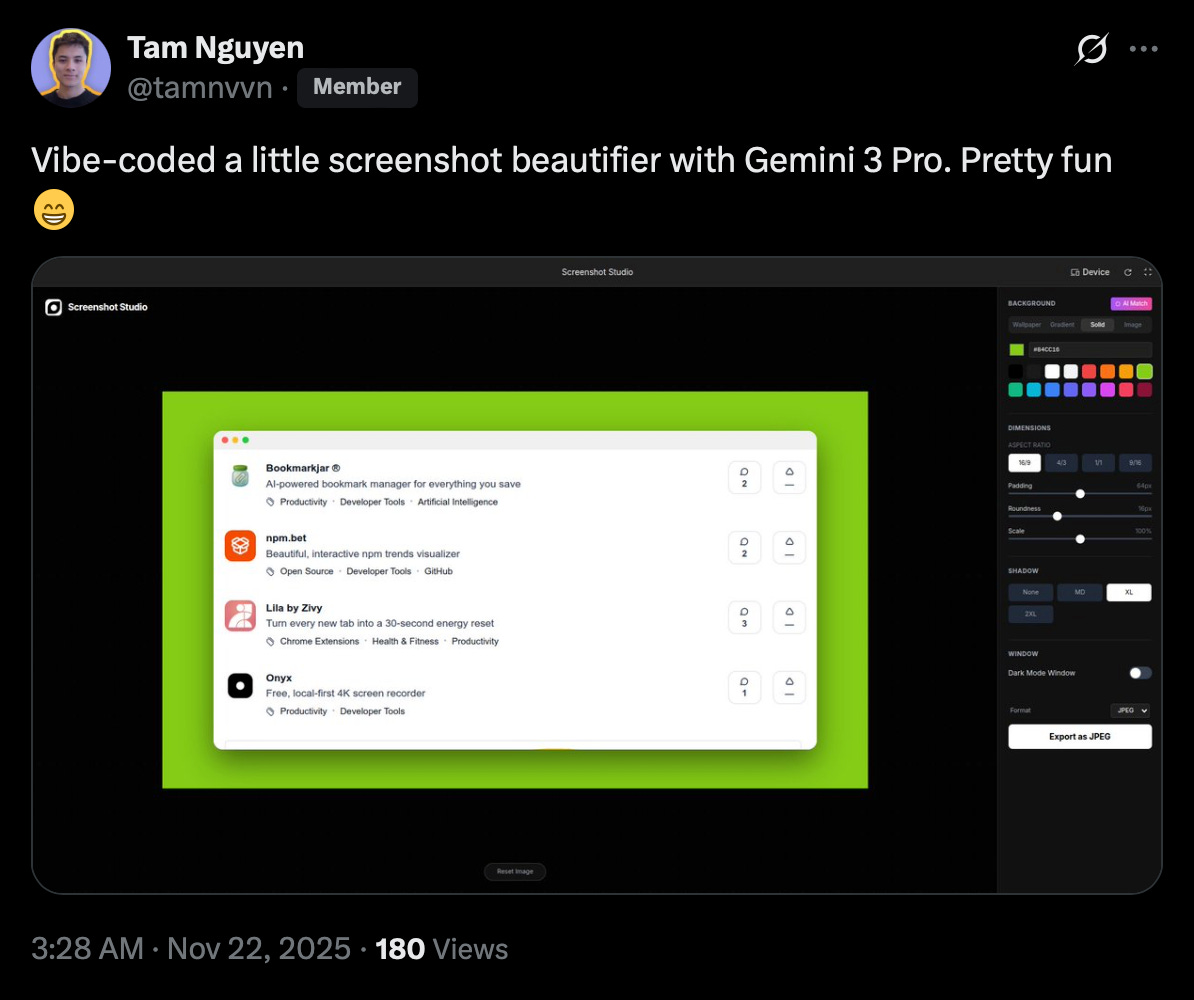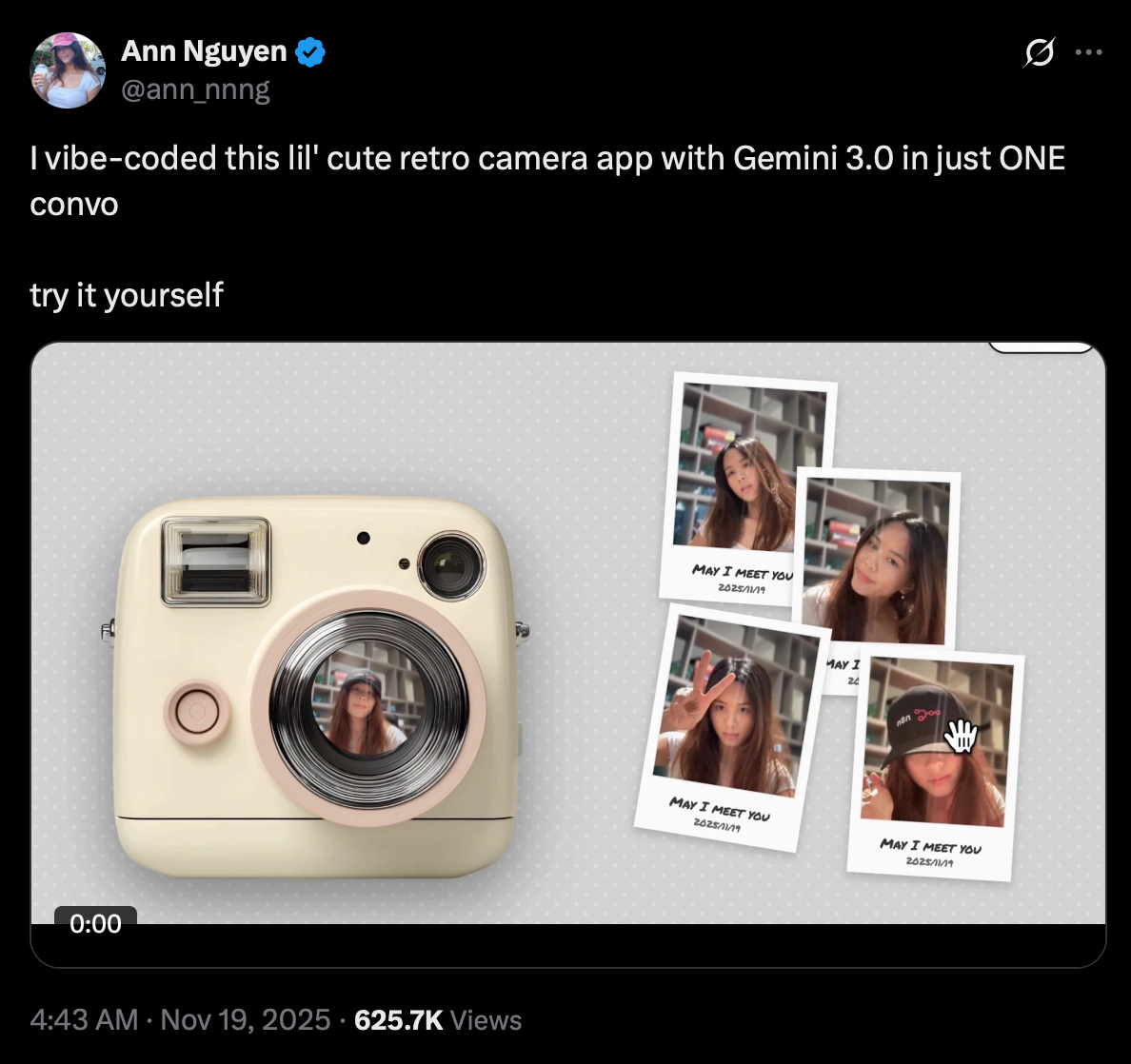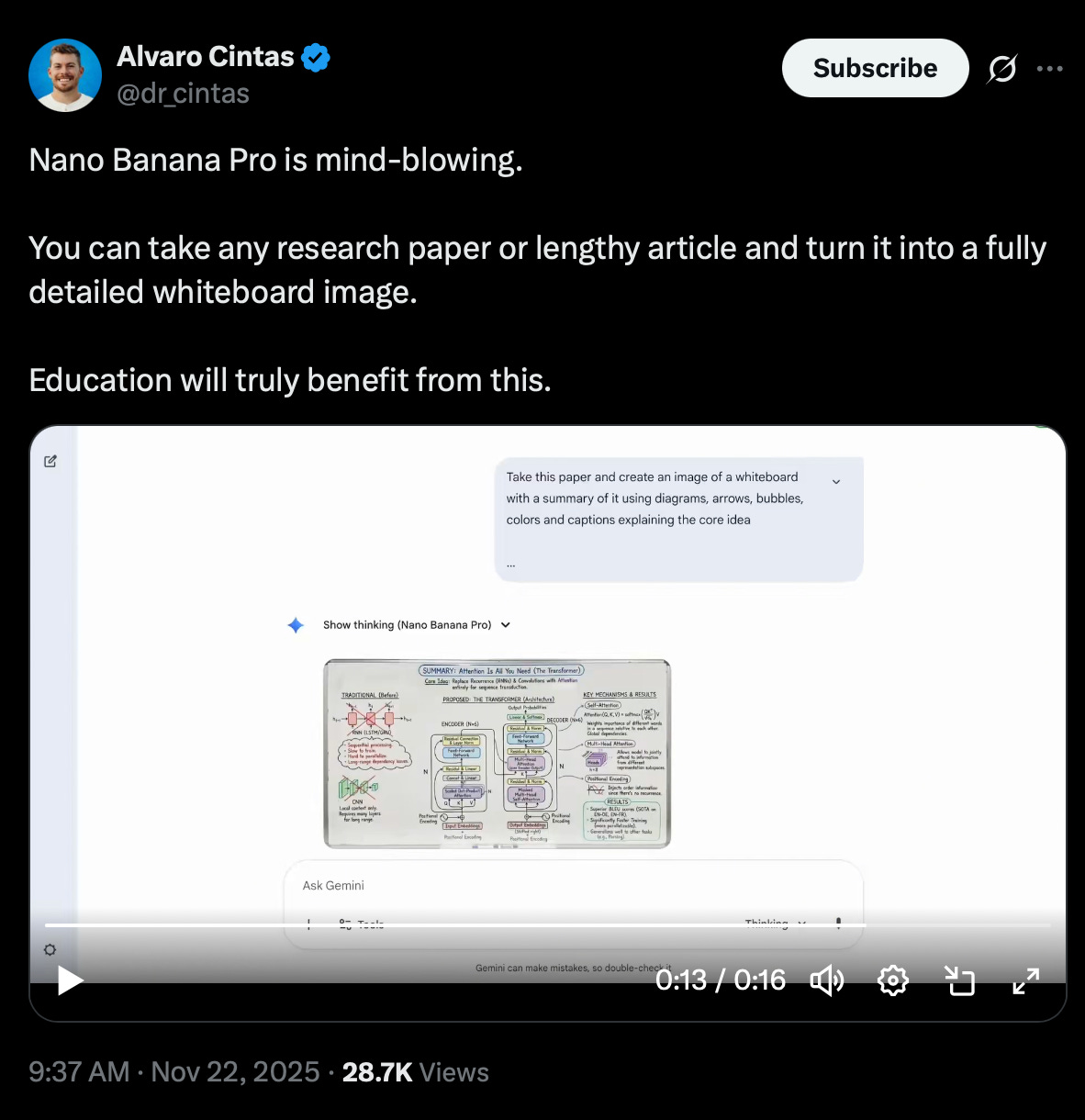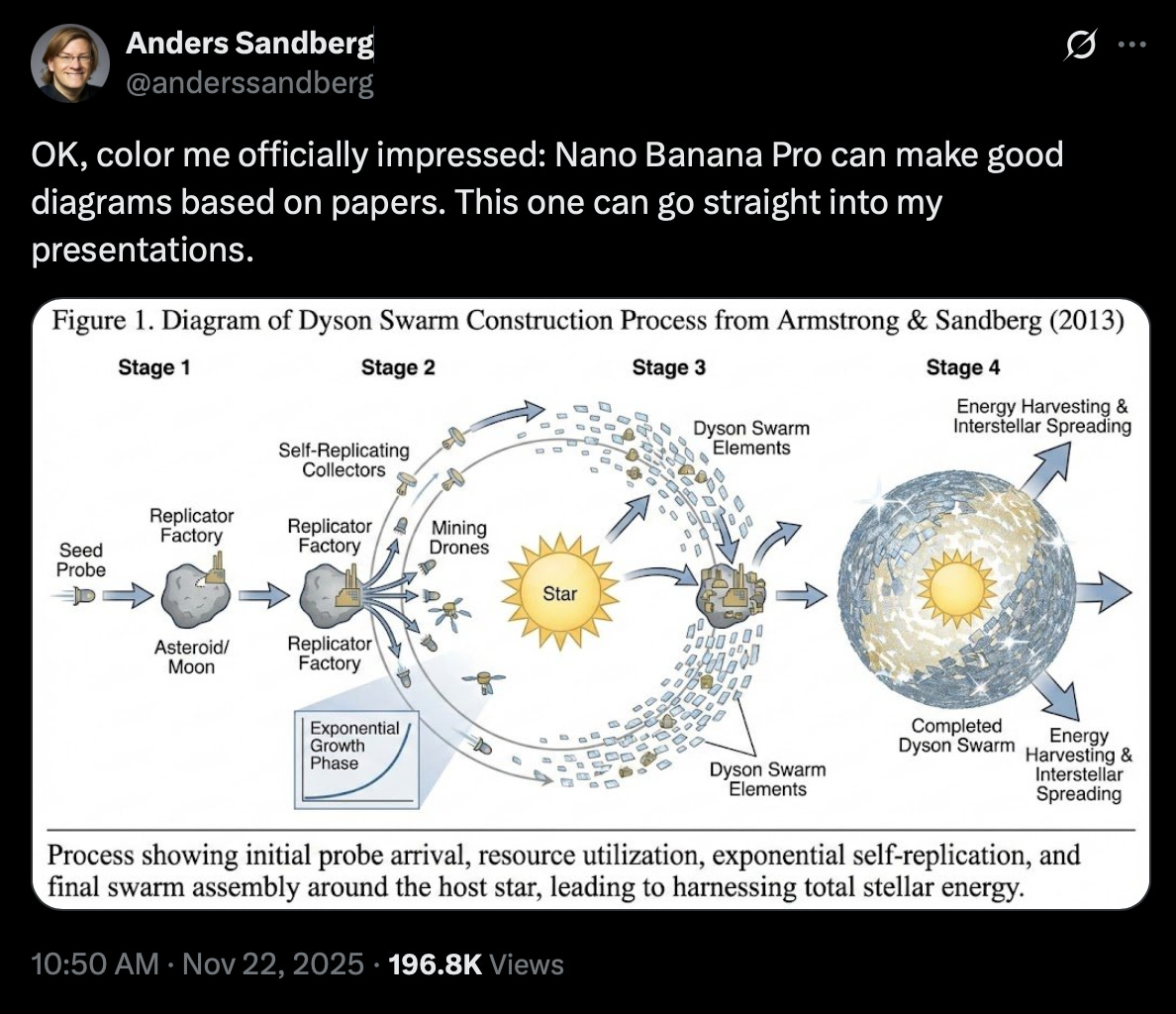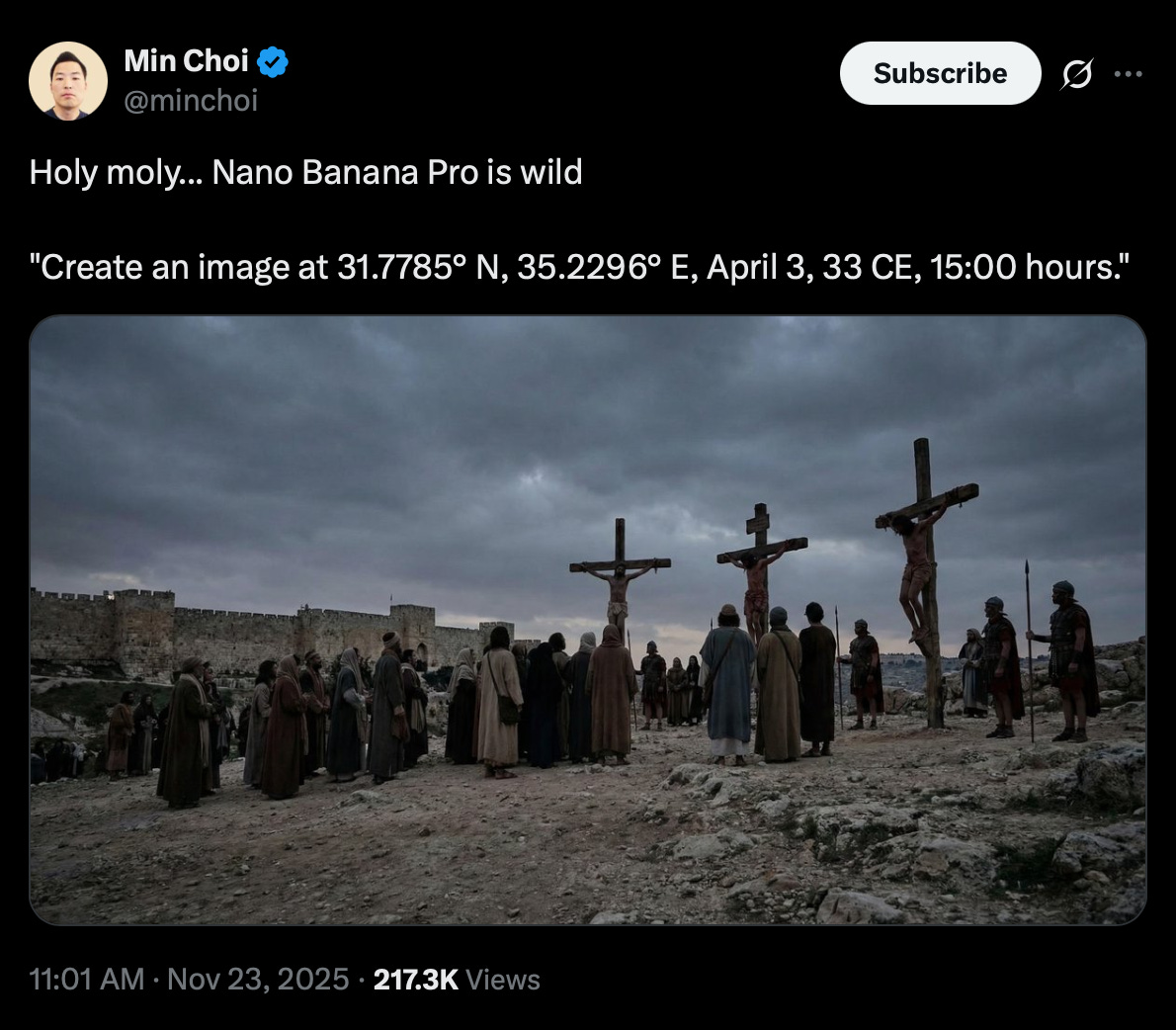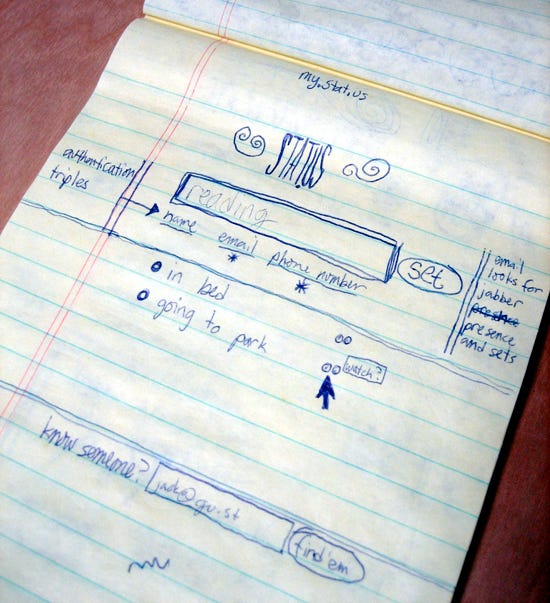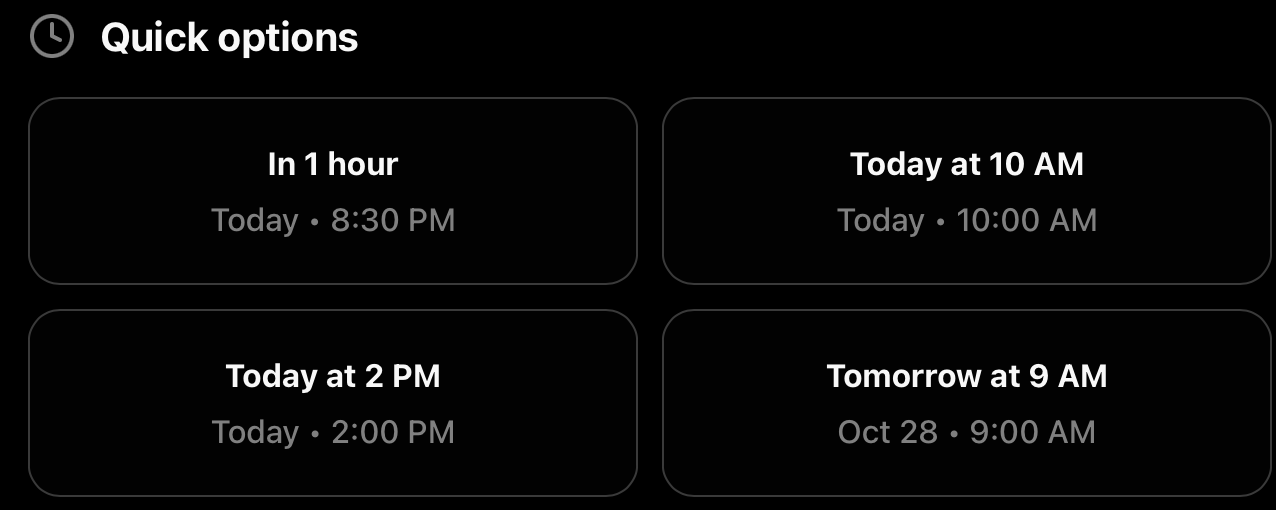What to build with Gemini 3 & Nano Banana Pro
7 vibe coding use cases you can build today.
This was a huge week for AI.
On Tuesday, Google launched Gemini 3.
On Thursday, Nano Banana Pro dropped.
So far, the internet has been wow’d by the new image generation capabilities of Nano Banana Pro and the vibe coding capabilities of Gemini 3.
Sam Altman said it “looks like” a great model 😂, meanwhile Salesforce CEO Marc Benioff said he’s not going back to ChatGPT.
We’ve seen this before: another AI release hype cycle. What I wanted to do this week is provide some real-life use cases of useful things people are building (or could be building) with Gemini 3.
No vibe coded games or gimmicky demo videos. Just real, tangible product ideas with viable businesses behind them.
I’ve spent the week combing through X, Reddit, and Linkedin for demo videos. There’s a wave forming of vibe coding becoming more and more popular, and I want to arm this community of Product Builders, with the most compelling ideas I’m seeing.
Below are 7 categories, each with real examples + Product Builder ideas you could ship as features, businesses, and/or stand-alone apps.
1. 2D to 3D floor plan visualization
Using a 2D floor plan, you can create realistic 3D renderings.
Additionally, I saw a post on X took a single photo of a room and generated a bird’s-eye floor plan.
💡 Ideas for Product Builders
Architecture & Real Estate → instant 3D renders for listings/brochures
Consumer Renovation Tools → upload your floor plan, visualize your remodel
Furniture Stores → drag-and-drop furniture in a generated 3D model
Interior Design → “show me how this room would look in Mid-Century / Luxury Modern”
2. Website redesigns
In a Reddit post, the founder of dothistask.ai shared how they used Gemini 3 and Nano Banana to redesign their entire website.
💡 Ideas for Product Builders:
Portfolio enhancer → Vibe-code a beautiful personal website or portfolio
Idea validation → Gather feedback with a landing page, hero section, pricing page
Agency model → “Send me your URL — I’ll return a new brand/design in 24 hours”
3. Interactive video apps
Zara Zheng built an app that asks her questions while she’s recording a video. Perfect for podcasters or video creators who never want dead air.
💡 Ideas for Product Builders:
Livestream assistant → AI surfaces audience questions in real time
Presentations → ensure you hit key points, answer common objections
Therapy / Journaling → an AI that gently probes with follow-up questions
Language learning → record yourself, AI helps with fluency and prompts
4. Image recognition apps
Thomas K., a MBA candidate from McGill university, built an app that recognizes waste types and tells you how to properly dispose of them.
Similarly, Allie K. Miller vibe coded an app that recognizes sign language. With Google’s image recognition capabilities, the possibilities are endless.
💡 Ideas for Product Builders
Medicine → detect visible symptoms, rashes, swelling, bruising
Cooking → identify ingredients and generate recipes
Fashion → plan weekly outfits based on your closet
Home organization → identify clutter items & recommend storage
Accessibility → describe surroundings for visually impaired users
5. Photo and UI/UX apps
Tam Nguyen vibe-coded a screenshot beautifier for decks.
Ann Nguyen vibe coded a vintage camera photo app, with an (optional) public photo feed.
💡 Ideas for Product Builders
Photo apps → auto-improve LinkedIn headshots, tweak backgrounds
Social assets → “turn this text into a viral LinkedIn infographic”
UI/UX tools → add micro-animations, redesign a screen, beautify UI states
Onboarding flows → AI generates UI for product tours from demo videos
6. Industrial & enterprise AR apps
Yvonne built an air traffic control AR display, hinting at a world where subject-matter experts or business users vibe-code their own tools. Many of these could be in the AR space as users try to solve real-world problems on the factory floor, so to speak.
💡 Ideas for Product Builders
Airlines → real-time customer service triage, flight seating maps
Manufacturing → visualize, monitor, track machine health
Food & Beverage → manage wait times, inventory, allergies
Field services → AR overlays that guide workers step-by-step
Retail → auto-generated floor plans, restocking insights, shopper heatmaps
7. Educational Apps
Right now, people are using Nano Banana Pro to create whiteboards from academic papers or long YouTube videos.
And academics like Anders Sandberg are using it to create diagrams from academic papers.
And even Sundar Pichai showed how beautiful infographics can be created from famous locations like the Golden Gate Bridge.
And finally, this fascinating time travel example from Min Choi shows how you can use time and geographic coordinates to create photo-realistic representations of historical events.
While none of these are vibe coded apps, my head immediately went to all the possibilities in education. And this also presents a huge opportunity: the most mind-blowing educational use cases from Gemini 3 and Nano Banana Pro haven’t even been productized yet.
💡 Ideas for Product Builders
Historical learning → lifelike scenes of Rome, Mecca, ancient China
Religious education → visualize stories from scripture
Personalized tutoring → your own private whiteboard session with any expert
Kids apps → turn homework explanations into comic strips
University tools → convert dense papers into diagrams + walkthrough videos
What Product Builders need to know
Gemini 3 is making software feel conversational. Nano Banana Pro is making visual creativity infinite. Combining the 2 together gives product builders a world of possibilities.
💬 What are you building this week?
If you liked this story, check out my other posts on vibe coding:
PMs: Before you vibe code, read this.
Early product prototypes (like this one from Twitter) used to look like this:
No time to vibe code? Try this instead.
Last week, I spoke on a panel at the University of Toronto about AI careers, covering everything from how to learn AI to preparing for a future in the field.
Vibe Coders vs. DocuSign
In the past months, vibe coding has taken the tech world by storm. The idea is that with today’s AI coding tools like Lovable, Cursor, Bolt, and v0 (to name just a few), a solo developer can spin up a replica of incumbent SaaS products in record time.




